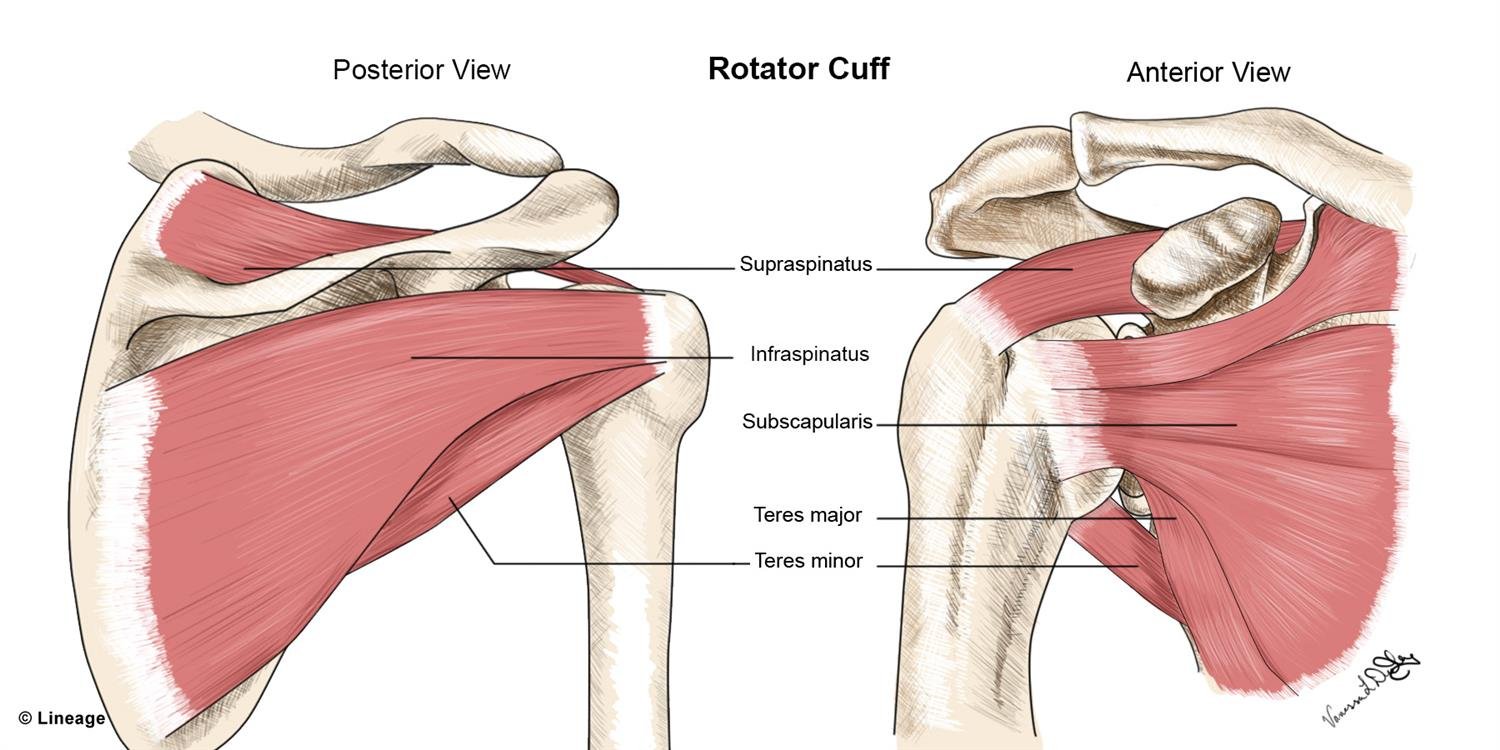The Rotator Cuff
The rotator cuff muscles of the shoulder are some of the most talked about muscles of the body, and for good reason. The majority of shoulder pain cases treated by acupuncturists and physiotherapists are related to conditions of the rotator cuff muscles. The high percentage of rotator cuff related injuries is not at all surprising due to the fact that the shoulder is a highly mobile joint that relies on the rotator cuff for its stability.
The rotator cuff consists of four muscles that originate on the scapula (shoulder blade) and insert onto the humerus (upper arm bone). From their insertion point the tendons then form a cuff around the head (top portion) of the humerus, providing the primary source of stability for the shoulder joint.
The four rotator cuff muscles:
1. Supraspinatus
2. Infraspinatus
3. Teres Minor
4. Subscapularis

Repetitive shoulder movements such as painting, serving a tennis ball, and lifting heavy objects overhead can lead to a repetitive strain injury (RSI) of the rotator cuff. Shoulder pain, weakness, and loss of mobility are common complaints reported with a rotator cuff injury.
Patients seeking rotator cuff treatment will often complain of a dull ache that radiates from the shoulder into the upper arm or elbow, usually accompanied by a painful inability to lift the arm overhead or reach it behind the back - like when doing up a bra strap.
The three most common rotator cuff injuries that we see at Poke Acupuncture in Newcastle are:
1. Rotator cuff tendinitis
- Tendinitis is an acute inflammation or swelling of an injured tendon. After an activity or repetitive use of the shoulder one or more of the rotator cuff tendons may develop tiny micro tearing. This can cause the tendon to become inflamed and sore. If the tendinitis is mild it will usually only become painful after activity and disappear with rest and if severe it will become a long term source of pain that affects athletic and daily activities.
2. Rotator cuff impingement
- Tendon impingement occurs when a tendon becomes constricted by its surrounding structures (often bones). The most common rotator cuff tendon that becomes impinged is the supraspinatus. The supraspinatus tendon must travel under the acromion (the top outer bone of the shoulder) to insert onto the head of the humerus. This insertion area leaves the supraspinatus tendon vulnerable to compression, especially if the tendon in enlarged due to swelling.
3. Rotator cuff tear
- The most common rotator cuff tear occurs in the supraspinatus tendon. Before tendons of the rotator cuff tear they have usually been affected by repetitive strain that has caused the tendon to fray or micro tear. As the strain on the tendon(s) continues it eventually tears the tendon(s) either partially or completely.
Rotator cuff injury prevention:
My favourite form of rotator cuff homecare is simply, easy and cheap.
- Buy a small rubber ball from the dollar store
- Place the ball on the wall and lean against the ball with one your rotator cuff muscles
- Keeping body weight pressure on the ball roll it into your rotator cuff muscles (you can only reach 3 of the 4)
- Do this on both shoulders, 3 - 4 times per week for 10 minutes at a time
- Your shoulders will thank you
For more information about shoulder pain, rotator cuff treatment or to book an appointment please contact us.
Ryan Samuels
Registered Acupuncturist and Chinese Herbalist
Learn
What to expect from your therapy or treatment.
About
Learn about our practitioners' extensive experience.
FAQs
Answers to most frequently asked questions.

Introductory Offer for New Patients
Call (02) 5590 0232 to book your FREE 15 minute assessment.



